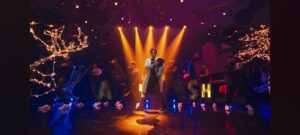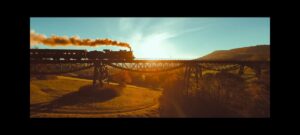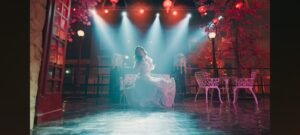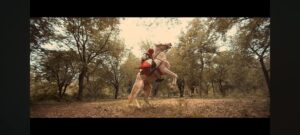
Technical Insights with DOP Dipak Kumar
Mar 04 2025
Technical Insights with DOP Dipak Kumar Padhy – Aghathiyaa
Cinematographer Dipak Kumar Padhy, known for his mastery in horror visual language, shares his sixth venture into the genre with Aghathiyaa. This film pushed the boundaries of hybrid cinematography, combining multi-layer practical shots, motion control, complex CG integration, and precise color management.
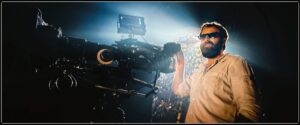
Q: The opening shot of Aghathiyaa is highly complex. How was it designed and executed technically?
Dipak Kumar Padhy:
The opening sequence is essentially a single-take composite shot, designed with over 10 layers, integrating live-action, practical effects, and CG.
We began with an empty base plate pass for the entire move, establishing the clean environment.
The camera move was manual on a gimbal, transitioning from a jimmy jib outside the bungalow compound to handheld gimbal operation, all in real-time.
Without motion control, we relied on precise frame line references, timing cues, and lock-off points to align each layer, from ghostly figures to environmental transitions.
The scene required complex parallax control, where background and foreground elements needed perfect spatial alignment.
Each character and event (from the Egyptian black magic group to the piano player with a neck twist) was shot as separate plates, ensuring clean masks during compositing.
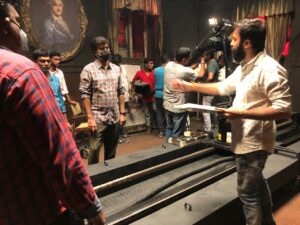
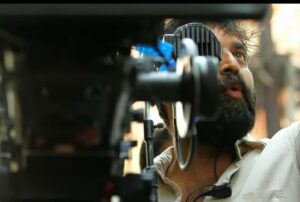
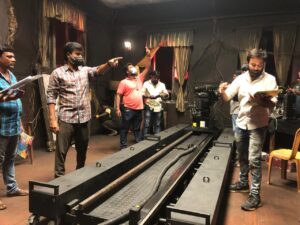
Q: How did you manage focus during dynamic robotic movements?
Dipak Kumar Padhy:
We faced a major challenge with the KUKA robot arm, where the systemized focus module failed. My focus puller Subbu manually pulled focus across multi-axis moves.
Given the tight T2.8–T3.5 aperture, with shallow depth, it required pre-mapped focus distances, carefully rehearsed moves, and real-time adjustments during the take.
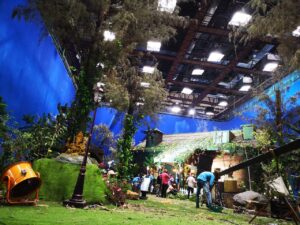
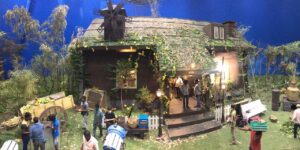
Q: What were your key creative decisions for period differentiation (1940s vs. 2025)?
Dipak Kumar Padhy:
I approached the period contrast through both color science and production design:
Color Palette: Completely eliminated blues in the 1940s portions to break the common cold period trope. Instead, I introduced warm ambers and desaturated greens, especially in foliage and textiles.
Lighting: Period scenes used diffused tungsten sources with controlled spill to mimic natural sodium warmth, while present-day scenes employed cooler, crisper sources.
Set Design: Collaborated with the art team to integrate Siddha medicinal elements visually—herbs, wooden textures, muted ochres.
Q: How was the VFX workflow managed, especially with international teams?
Dipak Kumar Padhy:
We had around 90 minutes of VFX-heavy content.
I maintained shot-by-shot lighting charts, noting fixture types, intensities, color temperatures, and practical effects used on set.
These records ensured seamless light replication in CG environments created by teams like our Iranian VFX collaborators.
For remote workflows, we conducted Google Meet supervision sessions, during which I provided HDRI references, shadow studies, and texture samples.
Q: Tell us about the controlled set builds and their technical execution.
Dipak Kumar Padhy:
At Gokulam Studios, we designed large-scale sets with blue screen extensions.
Forest & Laboratory: We used 360-degree practical foliage, backed by chroma for depth extensions.
Train Sequence: Constructed a half-compartment shell, with a 20’x10′ platform. All exteriors and surrounding geography were CG, matched to our lighting continuity using directional key sources and ambient occlusion maps.
Q: How did motion control enhance key sequences?
Dipak Kumar Padhy:
Motion control allowed us to execute repeatable, high-precision moves, particularly for:
Soul Transfer Sequence: Multi-pass motion control, combining live actress plates and transparent CG overlays to depict the soul’s movement.
Climactic Soul Fight: Combined real fighters’ moves with motion-controlled camera passes. Post-shoot, we extracted 3D motion data to sync CG environments and particle effects.
For face replacements, we shot close-up expressions on iPhone (for flexibility) and mapped them onto CG doubles using face tracking markers.
Q: What was your core camera and lens package?
Dipak Kumar Padhy:
Main Cameras:
ARRI Alexa SXT (mounted on Panther dollies and jibs).
ARRI Mini LF (for gimbal work due to its lightweight ).
Lenses:
ARRI Signature Primes.
My favorite was the 25mm, giving us immersive wide-angle perspectives, crucial for haunted spaces and group choreography.


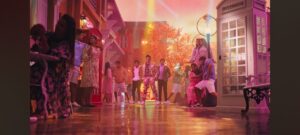
Q: What lighting philosophy drove the film?
Dipak Kumar Padhy:
The visual approach combined soft, controlled contrasts with selective harshness where needed.
Key Ratios: Maintained a balance of 1:2 to 1:4 key-to-fill ratios depending on the mood.
DMX-Controlled Fixtures: Used across the board for precise scene recalls.
Practical Integration: We embedded real candles, oil lamps, and gaslights for authentic period illumination.
Aperture control was crucial, mostly kept between T2.8–T3.5 to achieve consistent bokeh and shallow focus while preserving sharpness.
Q: How did you consciously avoid repeating yourself, considering your experience in horror?
Dipak Kumar Padhy:
As this was my 6th horror film, I was adamant about evolving the visual language.
Avoided typical blue-tinted night scenes.
Focused on layered movement, period-specific art direction, and bold color blocking.
Enhanced narrative-driven framing, letting the camera behave as a character transitioning between time and reality.
Q: Final thoughts on Aghathiyaa as a technical achievement?
Dipak Kumar Padhy:
Aghathiyaa is a complete amalgamation of precision cinematography, disciplined VFX supervision, and cohesive color design. It was an opportunity to push what Indian horror visuals can be, grounded in story-first cinematography but executed with technical rigor.
Article by CJ Rajkumar
Author/ Cinematographer
–

